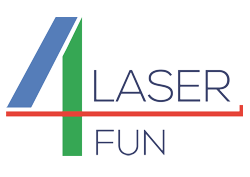Results of the work in the Laser4Fun project has been published as:
Tobias Stark , Thomas Kiedrowski, Holger Marschall and Andrés Fabián Lasagni. Avoiding Starvation in Tribocontact Through Active Lubricant Transport in Laser Textured Surfaces. Lubricants 2019, 7(6), 54.
Abstract
Laser texturing is a viable tool to enhance the tribological performance of surfaces. Especially textures created with Direct Laser Interference Patterning (DLIP) show outstanding improvement in terms of reduction of coefficient of friction (COF) as well as the extension of oil film lifetime. However, since DLIP textures have a limited depth, they can be quickly damaged, especially within the tribocontact area, where wear occurs. This study aims at elucidating the fluid dynamical behavior of the lubricant in the surroundings of the tribocontact where channel-like surface textures are left after the abrasion wear inside the tribocontact area. In a first step, numerical investigations of lubricant wetting phenomena are performed applying OpenFOAM. The results show that narrow channels (width of 10 μm) allow higher spreading than wide channels (width of 30 μm). In a second step, fluid transport inside DLIP textures is investigated experimentally. The results show an anisotropic spreading with the spreading velocity dependent on the period and depth of the laser textures. A mechanism is introduced for how lubricant can be transported out of the channels into the tribocontact. The main conclusion of this study is that active lubricant transport in laser textured surfaces can avoid starvation in the tribocontact.
